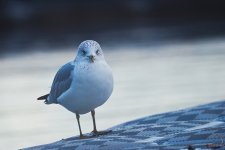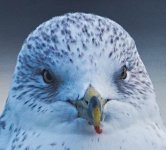JGobeil
Nature Photographer
Hello Jules
Attached are two crops, 1:1 scale, showing what I mean.
The purple/pink-ish reflections in the beak and eye on the Wood Sandpiper, and the reflections in the water droplets in the feathering of the Grebe.
This CA is visible in bright light conditions only and only when light is concentrated.
Cheers
Tord
Tord,
I also have photos where drops of water have this defect. However, it looks like ordinary purple fringing to me. I think we see it as a general purple reflection because the image portion causing fringing is very small. Looking at your 2 photos, I do not see any general purple tint which would be a sign of overall CA.
As I understand it, the overall CA would be axial (longitudinal) CA while the purple fringing around your droplets would be transverse(lateral) CA. See this article:
http://en.wikipedia.org/wiki/Chromatic_aberration
My SW80ED will sometimes show purple fringing around water droplets or small very bright objects like your photo and very rarely as a thin purple or magenta line around sharp lines. My Olympus 100-300 mm is much worse for CA - fortunately it can be corrected.
Regards
Jules





